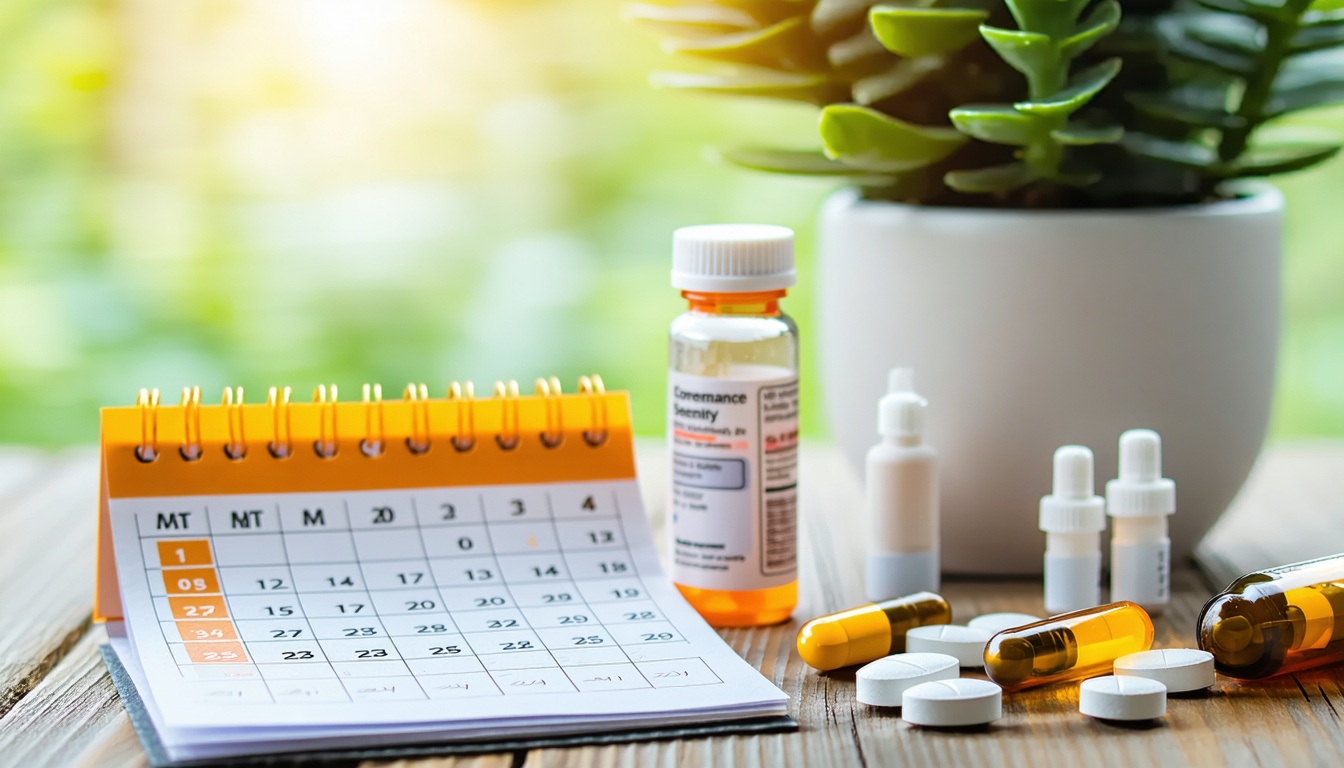Importance of Daily Dosing Compliance
Daily dosing compliance is critical within Medication-Assisted Treatment (MAT) programs. We recognize that maintaining adherence to prescribed medication regimens directly impacts recovery outcomes. Understanding the implications of medication nonadherence and the various factors influencing adherence is vital.
Impact of Medication Nonadherence
Medication nonadherence can lead to several adverse consequences, including worsened health conditions and increased healthcare costs. Research indicates that patients who do not adhere to their prescribed regimens often face complications that necessitate more intensive and costly interventions, underscoring the importance of daily dosing compliance in MAT programs.
The ramifications of nonadherence can culminate in a cycle of poor health outcomes and escalated healthcare spending across the board. In many cases, it signifies a breakdown in the patient-care provider relationship, where communication regarding medication formulations, timing, and side effects has not been effectively conveyed.
| Consequence of Nonadherence | Description |
|---|---|
| Worsened Health Conditions | Increased risk of relapse or adverse reactions |
| Increased Cost of Care | Necessitates more extensive treatments due to complications |
| Higher Healthcare Spending | Overall rise in health-related expenses for patients and providers |
Factors Influencing Medication Adherence
Various factors influence a patient’s ability to adhere to their medication regimens. We understand that both personal and systemic challenges can hinder effective treatment. Key factors include:
- Education & Information: Providers sometimes fail to adequately educate patients about their medications, including dosage and side effects (PMC).
- Socioeconomic Status: Employment status and insurance access can determine a patient’s ability to afford medications, directly affecting adherence to treatment.
- Cultural & Personal Beliefs: Illiteracy, religious views, and cultural attitudes towards health care can create barriers to understanding and adhering to treatment plans (PMC).
- Polypharmacy: Patients managing multiple medications may struggle to keep track of their regimens, which can complicate adherence.
To promote adherence, we must enhance patient and provider education and develop robust communication strategies. Forming strong partnerships between healthcare providers and community organizations can help address persistent barriers to adherence—improving the long-term success and stability of patients in MAT programs. We advocate for strategies that utilize both active and passive reminders, ensuring our patients have the support they need throughout their recovery journey. For more information on the components and effectiveness of MAT, please refer to our article on the science behind medication-assisted treatment (MAT).
Healthcare Provider & Patient Education
Educating Patients on Prescribed Medications
At Genesis Treatment Services, we understand that patient education is vital for enhancing the importance of daily dosing compliance in MAT programs. Patients must be fully informed about their prescribed medications, including formulation, timing, dosage, frequency, side effects, and costs. Research indicates that inadequate education by providers, including physicians and nurse practitioners, contributes to medication nonadherence.
To address this, we prioritize comprehensive discussions with our patients, ensuring they understand every aspect of their treatment plan. This includes:
- Clear explanations of medication purposes.
- Detailed instructions on how and when to take medications.
- Information on potential side effects and what to expect.
By fostering an open line of communication, we improve our patients’ understanding and confidence in their treatment, ultimately enhancing adherence rates.
Addressing Barriers to Adherence
In addition to educating patients, we recognize the need to tackle barriers that hinder medication compliance. Evidence shows that practical difficulties related to medication packaging can affect adherence. While some may think that specific packaging improves adherence, it is essential to identify and address any challenges patients may face. Common barriers can include:
| Barrier | Description |
|---|---|
| Complexity of Dosing | Complicated regimens can overwhelm patients. |
| Side Effects | Fear of potential side effects may discourage regular use. |
| Economic Factors | High costs of medications can lead to nonadherence. |
By actively listening to our patients’ concerns, we can modify treatment plans to accommodate their needs. For instance, we advocate for policy proposals to cap out-of-pocket spending based on income, making medications more accessible and affordable (PMC).
In our MAT programs, we emphasize that adherence to medications like methadone and buprenorphine significantly improves treatment outcomes, allowing individuals with opioid use disorder to maintain employment, reduce criminal behavior, and engage actively in counseling (AHCCCS). With a strong focus on education and addressing barriers, we equip our patients with the tools they need for successful recovery and long-term sobriety.
For more insight into how medication works in tandem with counseling, explore our article on using medication and counseling together: why it works.
Socioeconomic Status & Medication Affordability
Economic Impact on Treatment Adherence
Economic factors significantly influence medication adherence among individuals undergoing Medication-Assisted Treatment (MAT) programs. Cost can serve as a substantial barrier to those trying to maintain their treatment regimens. Studies indicate that a notable proportion of patients refrain from purchasing medication due to financial concerns, leading to increased risks of relapse and negative health outcomes. In fact, evidence shows that when individuals with opioid use disorder (OUD) adhere to their prescribed medications like methadone or buprenorphine, they experience improved recovery outcomes, such as maintaining employment and engaging more effectively in counseling interventions (AHCCCS).
| Factors Influencing Adherence | Percentage of Patients Affected |
|---|---|
| High monthly medication costs | Varies by country |
| Lack of insurance coverage | Significant impact on adherence |
| Out-of-pocket expenses | Patients often skip doses |
Adherence rates in MAT programs can vary significantly across different socioeconomic settings. For instance, MAT programs in low- and middle-income countries report an average retention rate of about 50% after 12 months, showcasing the influence of economic factors on treatment engagement (PubMed Central).
Policy Proposals for Improved Adherence
To address the economic barriers that affect medication adherence, we can advocate for specific policy changes aimed at enhancing access to essential medications. One effective proposal is to support initiatives that cap out-of-pocket spending on prescription drugs based on a patient’s income. By easing the financial burden on individuals, we can significantly encourage consistent participation in MAT programs and emphasize the importance of daily dosing compliance in MAT programs.
Additionally, implementing policies that increase insurance coverage for MAT medications would improve access to necessary treatments, especially for those in low-income brackets. By addressing these economic barriers, we can foster better treatment outcomes and contribute to a more effective public health response to substance use disorders.
In summary, understanding the socioeconomic context and advocating for favorable policy reforms can directly impact medication affordability and enhance treatment adherence for individuals struggling with substance abuse.
Enhancing Medication Regimen
Enhancing our medication regimens is crucial for ensuring successful outcomes in medication-assisted treatment (MAT) programs. By simplifying dosing regimens and improving medication packaging, we can create a more effective and user-friendly experience for individuals in treatment.
Simplifying Dosing Regimens
Reducing the complexity of a dosing regimen can lead to increased adherence among patients. Studies indicate that simplifying these regimens improved adherence in 7 out of 9 cases, with relative improvements ranging from 8% to 19.6%. Particularly, once-daily dosing has shown to enhance medication adherence compared to twice-daily regimens.
| Dosing Regimen | Improvement in Adherence (%) |
|---|---|
| Twice-Daily | Baseline |
| Once-Daily | 8% – 19.6% |
While the available evidence supporting these findings is limited, it is clear that tailoring changes to individual patients’ needs can lead to better adherence rates. We should consider patients’ lifestyles and preferences when designing their dosing plans to optimize their treatment experience.
Role of Medication Packaging
The packaging of medication can impact adherence, but the evidence supporting specific innovations is not convincing. Many patients may face practical challenges when using medications based solely on their packaging (NCBI). To foster adherence, it is essential to address any issues related to medication packaging.
Among the considerations for effective packaging are easy-to-read labels, child-resistant features, and blister packs that simplify the counting of doses. These modifications can alleviate some barriers that may prevent individuals from properly adhering to their treatment regimens.
At Genesis Treatment Services, we strive to provide our patients with effective solutions for their substance abuse treatment needs. By considering the importance of daily dosing compliance in MAT programs, we can enhance our patients’ experiences and support their journeys towards recovery. For more insights, explore our articles on understanding the role of methadone in opioid use treatment and suboxone vs. methadone: key differences in recovery outcomes.
Medication-Assisted Treatment (MAT) Programs
In considering the options available for substance abuse treatment, we recognize the value of Medication-Assisted Treatment (MAT) programs. These programs incorporate various components that have proven effective in addressing opioid dependence and improving patients’ lives.
MAT Components & Effectiveness
MAT programs are individualized, combining behavioral therapy with specific medications to treat opioid-specific substance use disorders. This comprehensive approach addresses both the physiological and psychological aspects of addiction, helping patients manage withdrawal symptoms and cravings effectively. Common medications used in MAT include buprenorphine, methadone, and naltrexone, each serving unique functions in the treatment process:
| Medication | Purpose | Administration Method |
|---|---|---|
| Buprenorphine | Reduces withdrawal symptoms without causing euphoria | Sublingual or subcutaneous |
| Methadone | Prevents withdrawal symptoms and cravings; blocks euphoric effects | Administered orally |
| Naltrexone | Blocks the effects of opioids; carries no abuse potential | Oral tablets or injectable form |
These medications work to normalize brain chemistry and reduce the likelihood of relapse. In doing so, they set the foundation for individuals to engage actively in counseling and other therapeutic interventions.
Benefits of MAT Programs
Our MAT programs offer multiple benefits that extend beyond medical treatment to foster overall well-being:
-
Reduced Need for Inpatient Detoxification: By providing ongoing support, patients often find they require less intensive services, leading to a more sustainable recovery approach.
-
Improved Employment and Social Functioning: Evidence-based treatments demonstrate that adherence to prescribed medications boosts patients’ ability to maintain employment, thereby enhancing their quality of life (AHCCCS).
-
Lowered Risk of Infectious Disease Transmission: By staying engaged in treatment, individuals reduce the risks associated with opioid use, such as HIV and Hepatitis.
-
Enhanced Treatment Retention: Continuous adherence to medication is linked to greater involvement in behavioral therapies and counseling, creating a robust support network essential for recovery (High Focus Centers).
-
Personalized Treatment Approach: Our MAT programs are tailored to fit the unique needs of each individual, considering their specific history and circumstances. This customization increases the likelihood of achieving long-term recovery and stability.
By recognizing the overall effectiveness of MAT, we can appreciate its vital role within an integrated care strategy aimed at achieving lasting sobriety. For further information on how MAT can support recovery, please check our resources on the science behind medication-assisted treatment (MAT) and using medication and counseling together: why it works.
Technology in Medication Adherence Monitoring
In our journey towards enhancing the effectiveness of Medication-Assisted Treatment (MAT) programs, technology plays a crucial role in improving medication adherence. We have witnessed significant advancements in this area, which we will explore along with criteria for assessing these monitoring technologies.
Advancements in Adherence Technologies
Recent innovations in medication adherence monitoring technologies have shown promising results in increasing patient compliance. A literature search from 2010 to 2021 identified 98 articles detailing various technologies such as:
- Electronic pill bottles
- Ingestible sensors
- Electronic medication management systems
- Blister pack technology
- Video-based technology
- Motion sensor technology
These advancements aim to provide accurate adherence monitoring, real-time tracking, and greater convenience for patients. Below is a summary table of some of these technologies and their key features:
| Technology Type | Key Features | Advantages |
|---|---|---|
| Electronic Pill Bottles | Tracks medication usage | Accurate adherence monitoring |
| Ingestible Sensors | Monitors medication ingestion | Provides real-time data |
| Electronic Medication Management | Organizes and tracks medication schedules | Enhances patient engagement |
| Blister Pack Technology | Easy-to-use packaging for doses | Reduces the risk of missed doses |
| Video-Based Technology | Visual reminders and feedback on usage | Promotes adherence through interactive means |
| Motion Sensor Technology | Detects movement with medications | Validates actual use of medications |
While these technologies offer several advantages, it is important to note their limitations. Many rely on proxy measures for adherence, lacking direct confirmation of medication ingestion, which may affect adherence estimates.
Criteria for Assessing Monitoring Technologies
To ensure successful implementation, we must adhere to specific assessment criteria when selecting medication adherence monitoring technologies. A total of 28 criteria have been categorized as follows:
- Development Information: Evaluates the technology’s origin and development process.
- Technology Features: Assesses usability, design, and functionality.
- Adherence Data Collection and Management: Reviews methodologies for capturing and managing adherence data.
- Feasibility and Implementation: Considers the practicality of integrating technology within clinical settings.
- Acceptability and Usability: Measures patient and provider acceptance of the technology.
Implementing these criteria aids in the thoughtful selection of adherence technologies, enhancing patient outcomes and treatment compliance (NCBI).
In our commitment to providing the highest quality addiction treatment, we recognize the importance of daily dosing compliance in MAT programs and the role technology plays in fostering this adherence. For more information on the various aspects of MAT, check our articles on the science behind medication-assisted treatment (mat) and using medication and counseling together: why it works.




